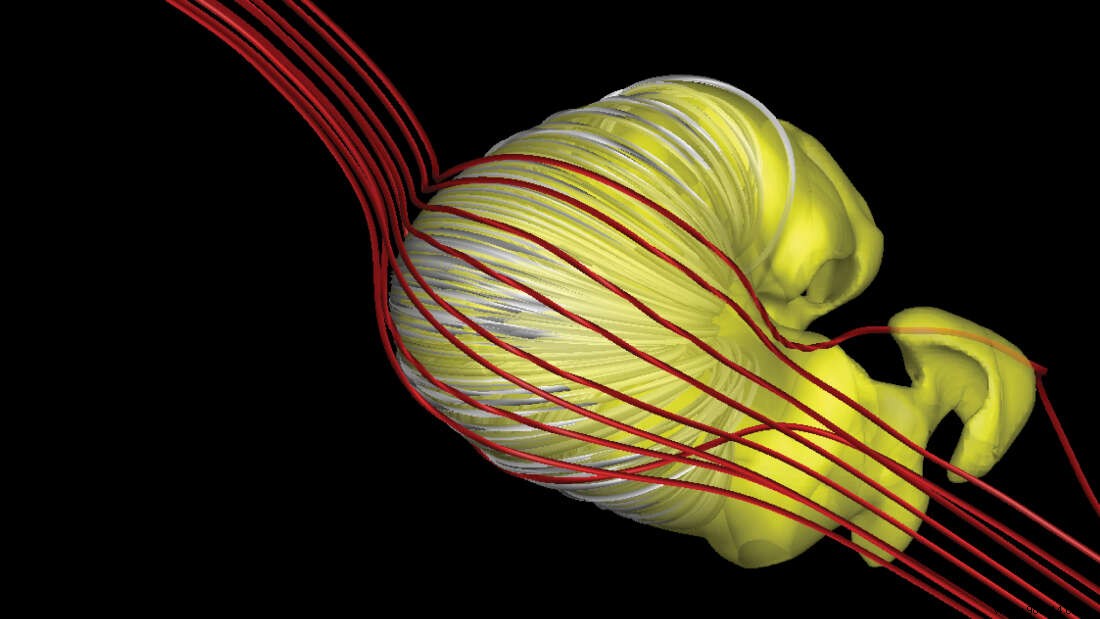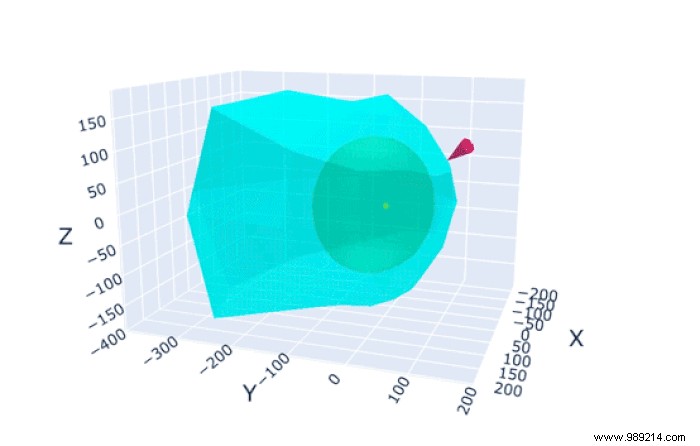Researchers have recently been able to measure the shape of the heliosphere, the protective bubble surrounding our solar system. This new study could help us better understand the environment of the Solar System and how it interacts with interstellar space.
The heliosphere is a magnetic bubble generated by the solar wind (a flow composed mainly of protons, electrons and alpha particles) that extends from our star outward. interstellar space. It is what protects our Solar System from harmful radiation from the rest of the galaxy . But what is the shape of this envelope?
A few months ago, researchers used computer models to predict the characteristics of this famous heliosphere using data from the Voyager probes. They had focused on electrically neutral hydrogen atoms from the interstellar medium which, once inside the heliosphere (some particles manage to pass), suddenly find themselves electrically charged.
Thanks to these particles, the researchers were able to "draw the boundary" separating our system from interstellar space, ultimately revealing a form of "deflated crescent".

As part of new work, Dan Reisenfeld and his team, from Los Alamos National Laboratory, opted for another approach, relying on data from NASA's Interstellar Boundary Explorer (IBEX) satellite, which detects particles from the heliosheath, the last layer of the heliosphere. The team then focused on the edge of this zone:the heliopause, where the solar wind collides with the interstellar wind .
To make the measurements, the researchers used a technique similar to the echolocation used by certain animal species such as bats. By emitting sound waves that ricochet off an object and send back an echo, the latter can then create a mental map of their environment, and thus locate themselves.
The researchers relied here on measurements of energetic neutral atoms (ENA) resulting from collisions between particles of the solar wind and those of the interstellar wind. "By doing so, we are able to see the edge of the heliosphere much like a bat uses sonar to 'see' the walls of a cave “, explains Dan Reisenfeld.
Naturally, the intensity of this signal depends on the intensity of the solar wind hitting the heliosheath. Also, the researchers collected data on a full solar cycle, from 2009 to 2019 . Based on the signals returned by the energetic neutral atoms, the researchers were then able to draw a three-dimensional map of the heliosphere .
"We were able to "see" the edge of the heliosphere the same way a bat uses sonar to "see" the walls of the heliosphere. 'a cave “, notes Dr. Reisenfeld.

This new map suggests that the minimum distance separating the Sun of the heliopause, facing the interstellar wind, is about 120 astronomical units . In the opposite direction, it extends for at least 350 astronomical units . As a reminder, one astronomical unit is equivalent to the Earth-Sun distance, or about 150 million kilometers.